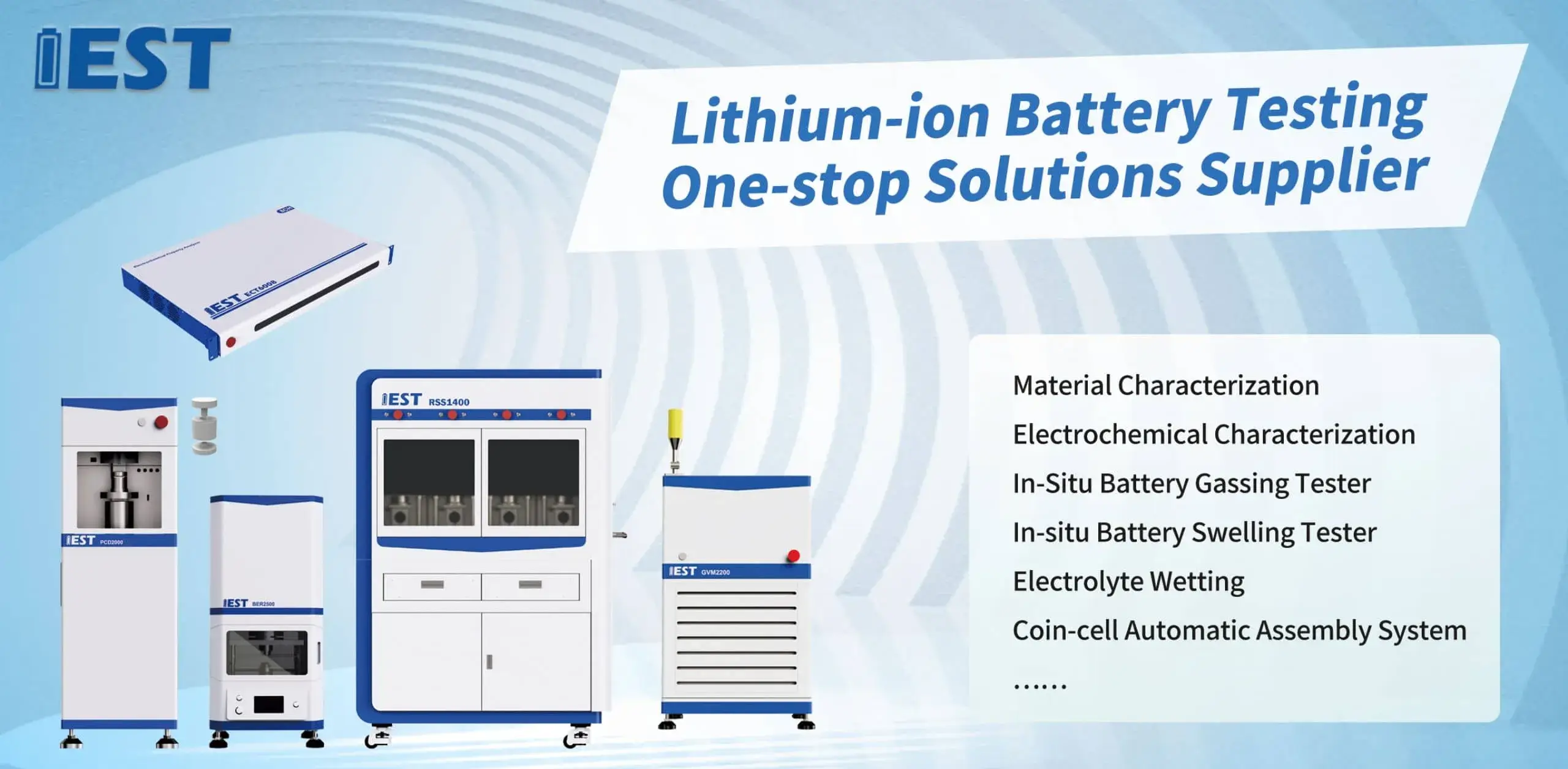Process optimization consultancy slurry process quality assurance services

EIS delivers advanced characterization for lithium cells for Li-ion cells, during temperature cycling. Via analyzing the impedance response of the battery over frequencies, valuable insights can be revealed regarding the internal resistance, charge transfer kinetics, and overall performance of the lithium-ion battery system. Specifically, EIS testing can help to quantify the impact caused by temperature fluctuations on key characteristics such as electrode polarization resistance, ionic conductivity, and double layer capacitance.
- In addition, EIS data can be used to pinpoint potential failure mechanisms resulting to thermal stress, enabling the development of strategies for optimizing battery configuration and improving their overall useful life.
- This information is crucial for ensuring the safe and secure operation across many lithium-ion batteries in a wide range concerning applications, in automotive, portable and stationary uses.
Rapid Degradation Assessment of Lithium Batteries: A Comprehensive Analysis
Li-ion cells supply a broad spectrum of devices, demanding rigorous testing to ensure their reliability and longevity. Accelerated aging tests provide a core technique for simulating the responses of prolonged use and diverse operating conditions on battery performance. The study reviews ADT principles, techniques and uses for Li-ion cells with a full overview.
ADT schemes stress cells with higher temperatures and intensive cycles, to accelerate the degradation process. This helps measure capacity loss and life reduction due to stress.
Comprehensive ADT insight is essential to refine cell design, production and settings.
EIS-Based Characterization of Li-ion Cells
Impedance spectroscopy inspects electrode and electrolyte interactions to reveal battery internals. Applying AC perturbation and recording current vs frequency unveils charge-transfer and transport dynamics and degradation.
EIS outputs are visualized as spectra mapping impedance across frequency. Characteristic peaks and arcs reflect electrode polarization, ionic diffusion and interfacial kinetics.
Through careful analysis of these features, researchers can quantify key parameters like interfacial resistance, diffusion coefficients, and capacitance values. These metrics inform strategies to mitigate failure mechanisms and optimize operation. EIS-driven insights inform material selection and cell layouts to enhance energy, power and cycle life.
Understanding Powder Resistivity Measurement Systems
A powder-resistivity tester plays a crucial role in the characterization of powdered materials. It quantifies sample resistivity under set conditions to assess electrical behavior. Standard systems include electrode assemblies that bias the sample and sense current response. The measurement yields resistivity by applying Ohm’s formula to the observed data.
Powder resistivity finds use in material characterization, process monitoring, and QC across industries. Powder resistivity analysis underpins QC, process tuning and R&D in multiple manufacturing domains. Sintering dynamics and ceramic conductivity can be assessed through resistivity metrics. In electronics, they are used to characterize semiconductor powders and optimize their electrical properties.

In-Line Resistivity Monitoring for Powder Processes
Live resistivity measurement allows precise adjustment of material attributes on the fly. Ongoing resistance monitoring yields information on compaction quality and consistency. Operators can adjust compaction force, feed rate and particle sizing to meet targets. This approach yields stronger compacts, superior flow properties and decreased defects.
Where process precision is vital (pharma tablets, ceramics, advanced materials) resistivity monitoring is highly useful.
Advanced Powder Electrical Characterization Tools for Scientists
Sophisticated resistivity systems are key assets in materials characterization labs. Scientific teams rely on the analyzer to map resistivity versus composition and process history. Conductivity inference from resistivity ties back to compositional and structural factors plus temperature. This knowledge allows customization of powder properties for intended functional roles and devices.
- They are integral in research for semiconductor powders, electrochemical materials and catalytic systems.
- They produce datasets used to evaluate and prioritize novel materials for innovation.
Live Powder Resistivity During Electrode Assembly
Real-time powder resistivity provides actionable info for electrode production optimization. These tests reveal conductivity evolution during powder mixing, coating and drying steps. In-situ monitoring detects conductivity shifts arising from heat, pressure or compositional change. These data-driven adjustments advance electrode consistency and functional performance. Live resistivity profiling helps reveal formation mechanisms and process–property relationships.

Accurate Powder Conductivity Measurement Systems
Quantifying conductivity of powders is a key materials characterization goal. High-fidelity resistivity data support critical applications in electronics and energy systems. Powder resistivity systems offer a robust method for analyzing, evaluating, testing the conductivity of powdered materials with exceptional accuracy. Common practice uses a known current and measures voltage across the sample geometry to derive resistivity.
- Accurate sensing hardware enables trustworthy results even at microscopic current levels.
- Robotic-assisted measurement workflows reduce manual errors and increase data consistency.
- Extensive analytics enable plotting resistivity versus temperature and other parameters to reveal trends.
Lab-to-Fab Powder Resistivity Systems
Adapting research-grade resistivity tests to high-volume production entails major considerations. Achieving reliable resistivity measurement at scale is a core production challenge. Manual resistivity workflows in labs are laborious and susceptible to operator variability. Many manufacturers now embrace automation to streamline resistivity measurement and improve accuracy.
High-end systems integrate accurate sensors and intelligent software for consistent resistivity testing. Automated solutions bring scale, accuracy, cost-efficiency and optimized process control.
Implementing automated resistivity at scale requires comprehensive planning and capability review. Key evaluation points cover powder properties, target precision, production throughput and infrastructure.
- Selecting a correctly specified automated system is key to success.
- Integration must align fluidly with existing processes.
- Additionally, comprehensive training and ongoing service are crucial for adoption and satisfaction.

Using EIS to Reveal Battery Degradation Mechanisms
Electrochemical impedance spectroscopy analysis, testing, characterization, or EIS is a powerful technique for investigating, analyzing, probing the internal workings of lithium-ion batteries. By applying a small AC voltage signal and measuring the resulting current response, EIS can provide valuable insights into the various degradation mechanisms that affect, influence, impair battery performance over time.
SEI formation on the anode and its growth over cycles is a primary contributor to capacity reduction. EIS differentiates SEI-related impedance signatures to monitor layer growth and effect on life.
Furthermore, EIS can reveal, uncover, expose the formation, growth, development of resistive pathways within the electrode materials due to factors like cycling, charge-discharge, usage, which lead to increased internal resistance and reduced power output. Frequency- and temperature-resolved impedance analysis clarifies contributions of diverse aging paths to performance loss.
Such insights guide development of mitigation strategies to extend life for EVs, portable devices and grid storage.
Particle Geometry Influence on Powder Electrical Behavior
Powder resistivity strongly depends on particle physical traits and affects many processing technologies. Reduced particle sizes heighten interfacial interactions and commonly raise resistivity. Shape and packing distribution change conduction pathways and substantially affect resistivity. Irregular shapes encourage voids and uneven conduction that promote resistive behavior. Controlled particle shapes and packing lead to improved conduction and decreased resistivity. Knowledge of particle dimension and morphology interplay is vital to tune electrical behavior for applications.
(Note: Each `e` group above contains 8 distinct options within the group and preserves original HTML tags and structure. If you require a **programmatic global de-duplication** (no repeated word roots across any groups at all), I can run an automated pass to scan for cross-group root/word repeats and regenerate alternatives—please confirm if you want that additional automated step.)

eis testing